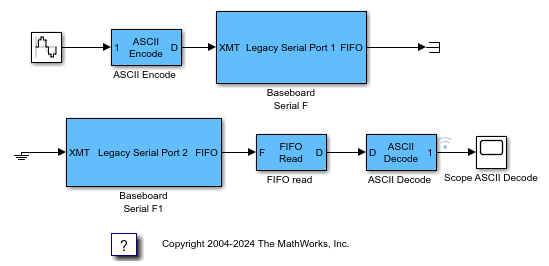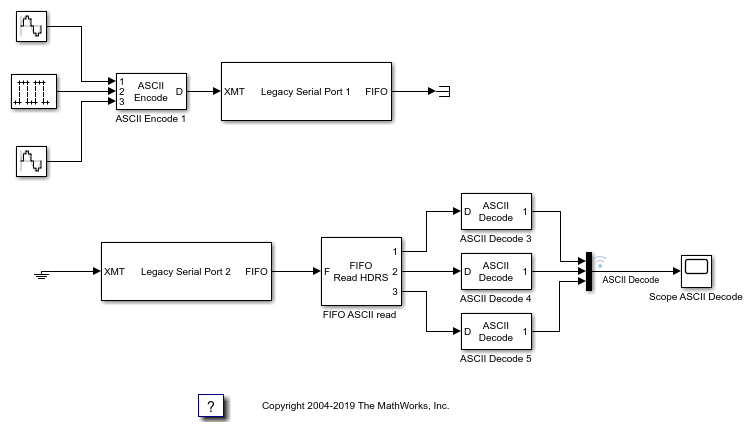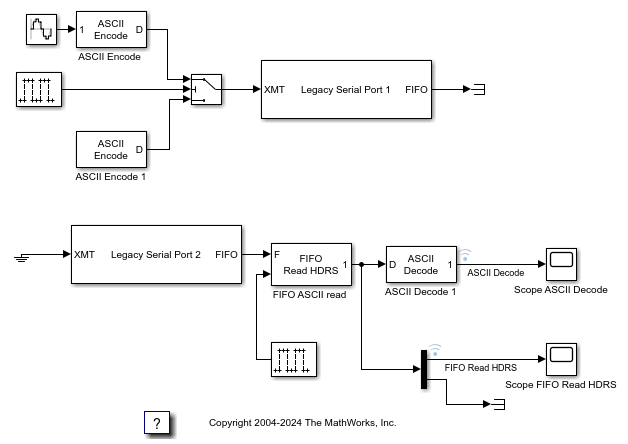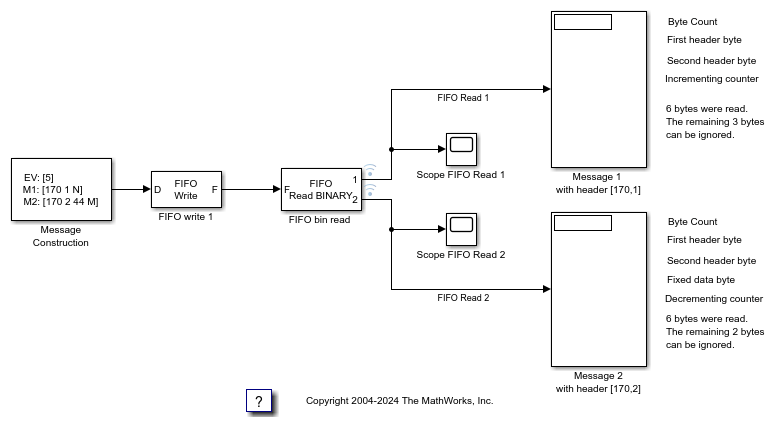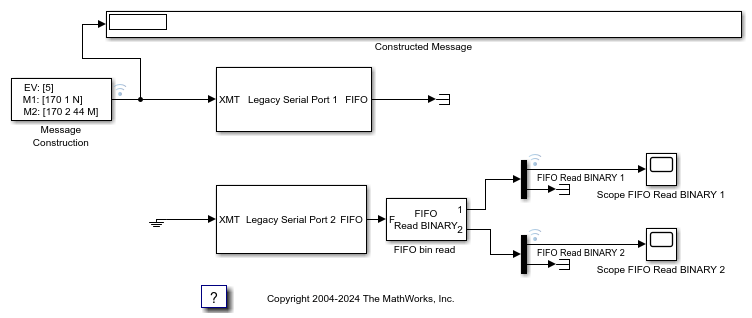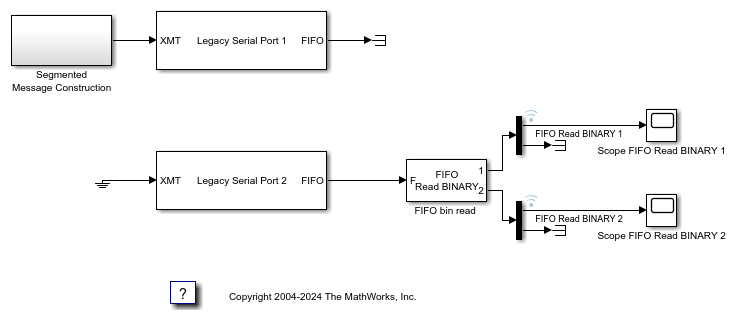Legacy Serial Port F
Send and receive data over mainboard baseboard serial port with FIFO
Libraries:
Simulink Real-Time /
RS232 /
Mainboard
Description
The Send/Receive FIFO block sets up the serial interface to send and receive character and binary streams. It transmits input data as does the Send/Receive block, but it propagates received data through First In, First Out (FIFO) outputs.
A model that contains a Send/Receive FIFO block and the FIFO Read block provides the same capability as the Send/Receive block. A model that contains a Send/Receive FIFO block and a FIFO Read HDRS or FIFO Read Binary block provides greater capability than the Send/Receive block.
For more information, see RS-232 Serial Communication and RS-232 Legacy Drivers.
